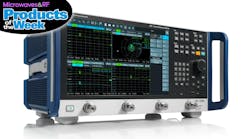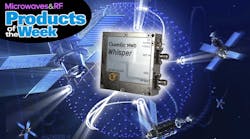Rotman Lens’ Electronic Beam Steering Aims At 5G Signals (.PDF Download)
Mobile wireless communications is heading toward its fifth generation (5G) with about as much fanfare as ever afforded a new group of technologies. Much of the excitement is due to the growing desires of wireless communications users for receiving such information as instant video and larger data files without delay. The massive improvements of 5G over the legacy wireless communications system, 4G Long Term Evolution (LTE), promise to deliver all that wireless users want and more, even to the extent of reaching to millimeter-wave frequencies for additional bandwidth.
What may be the most ironic part of the big build-up to 5G is the fact that there are yet no established standards in terms of modulation schemes, frequencies, and bandwidths. But one thing is for certain: Bandwidth will be needed, and millimeter-wave frequencies do not (as of yet) suffer the congestion of the many wireless applications found at lower frequencies. Millimeter-wave frequencies used in 5G and key components, such as antennas, will be needed for those high-frequency communications links. One promising solution for the antennas in those millimeter-wave links is the Rotman lens.








